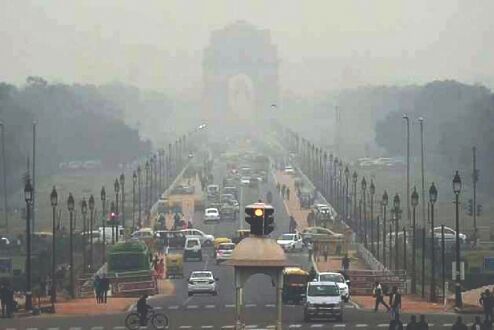Seasonal average of winter pollution in Delhi-NCR higher this winter; smog episodes shorter: CSE

New Delhi: Seasonal average of winter pollution in Delhi-NCR in 2020-2021 was higher than in the previous year but the severity and duration of smog episodes was lower, a new analysis by environment think tank Centre for Science and Environment (CSE) said on Wednesday.
For the purposes of implementation of the Graded Response Action Plan (GRAP), winter in the region is officially demarcated as the period from October 15 to February 1, the CSE said.
This winter, there were 23 days when the city-wide average of PM2.5 concentration was in the 'severe' or 'worse' AQI category — down from 25 such days in the winter of 2019-2020 and 33 in 2018-19, the analysis said.
Technically, a smog episode is defined for the purpose of implementing emergency action under GRAP, when levels of PM2.5 remain in the 'severe' category for three consecutive days, it said.
It also said that Ghaziabad was the most polluted among the four neighbouring towns of Delhi and in the national capital city, north Delhi was the most polluted with Jahangirpuri as the dirtiest hotspot.
There is always a special interest in understanding winter pollution trends — given the extraordinary situation due to the pandemic this year, as well as the fact that winter remains the most difficult season in this region due to atmospheric conditions of inversion, calm wind, and cold weather, said Anumita Roychowdhury, executive director-research and advocacy, CSE.
"The trapped winter air traps local and regional pollution in turn, and gives rise to the deadly winter smog that we, the residents of Delhi-NCR, are so familiar with," said Roychowdhury, who also heads CSE's sustainable urbanisation, air pollution and mobility programmes.
The CSE said that while Delhi has been battling a serious challenge of prolonged smoggy days every winter, in the time horizon of 2015-2020, several multi-sector actions have been initiated and these have been a part of the Comprehensive Clean Air Action Plan (CCAAP) as well as GRAP.
It said that 12 stations witnessed an improvement in their seasonal averages over last year.
Most improvement was noted at NSIT Dwarka, Wazirpur and Shadipur, the CSE said, adding that the maximum increase was noted at Patparganj, Vivek Vihar and R K Puram (all residential areas).
Stations in north and east Delhi continued to exhibit highest PM2.5 levels, while west Delhi was relatively cleaner, it said.
Winter season is always a special challenge when inversion, and cool and calm weather traps and spikes daily pollution. But this is also the bar to understand the effectiveness of round-the-year action in reducing long-term pollution in the region," Roychowdhury said.
Despite the declining trend (year-on-year basis) due to action taken over the last few years on clean fuels for industry and transport, power plants, trucks, old vehicles etc. the winter PM2.5 concentration has bounced back, unmasking the impacts of local and regional pollution. This demands quicker and more ambitious regional reforms to curb pollution from all sources with scale with speed," she said.



